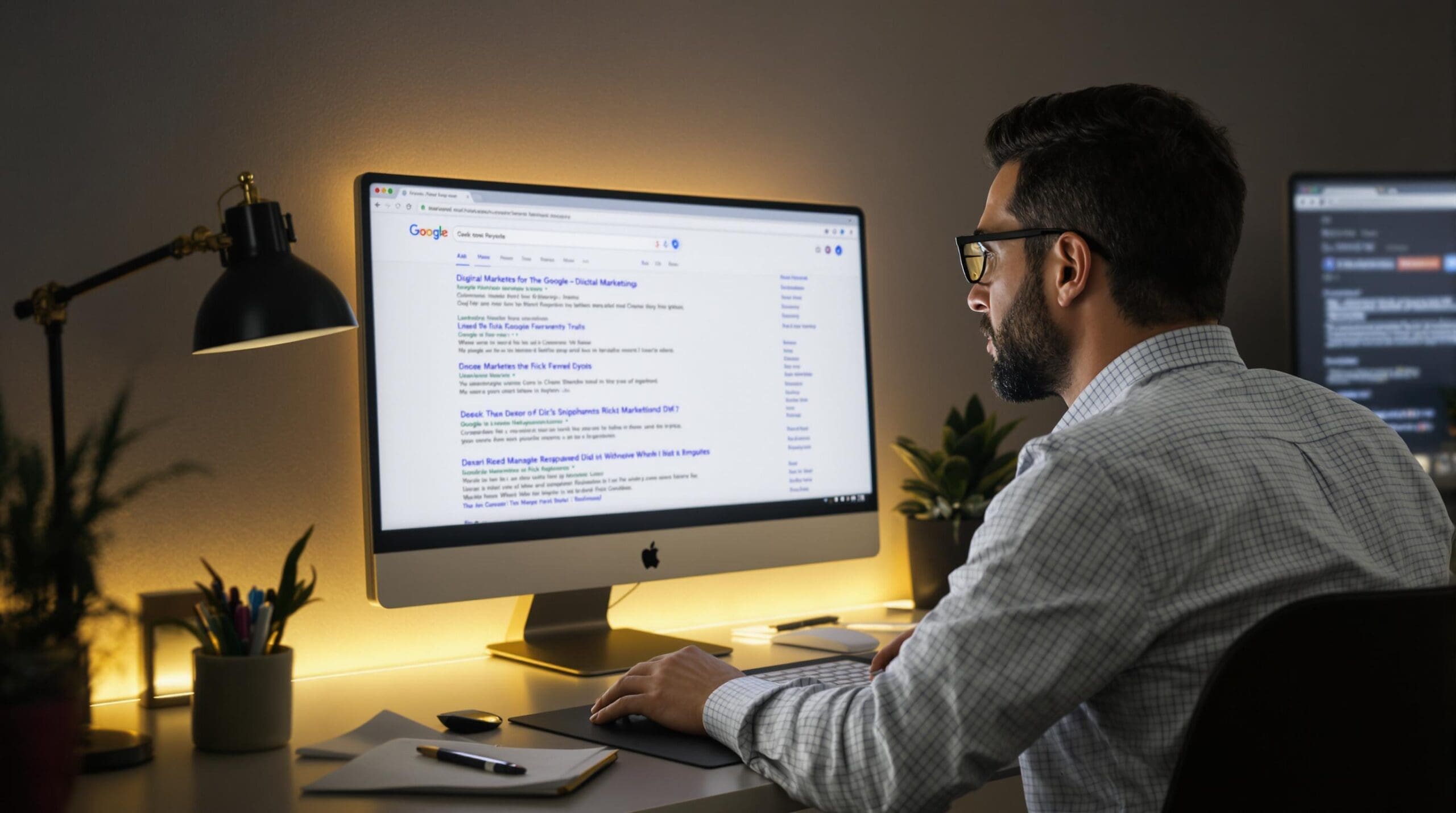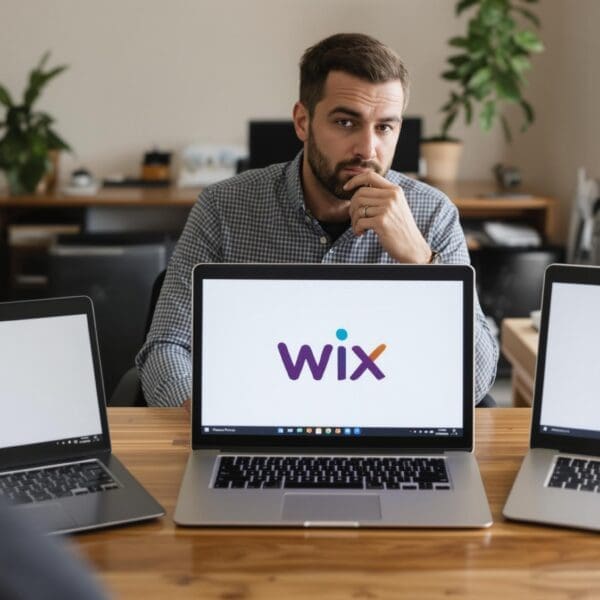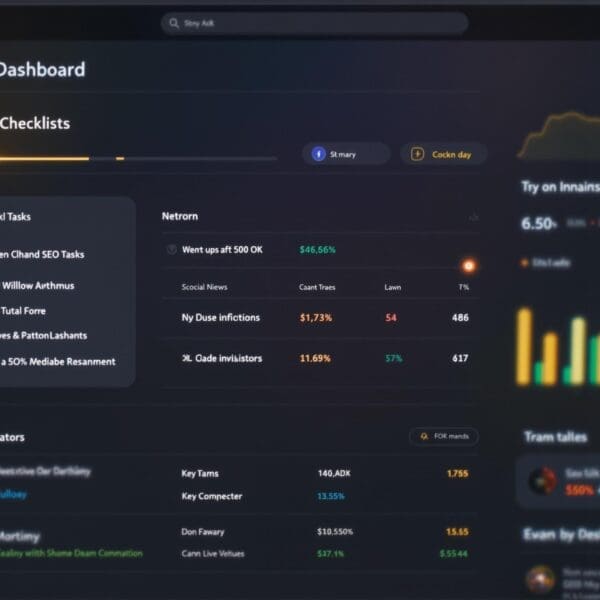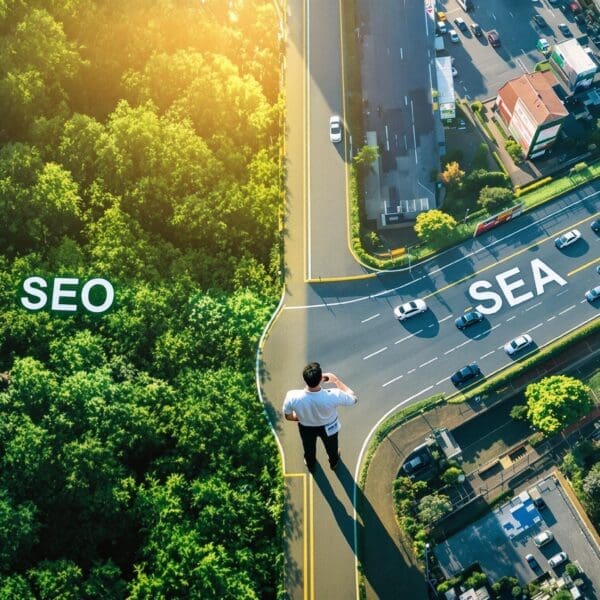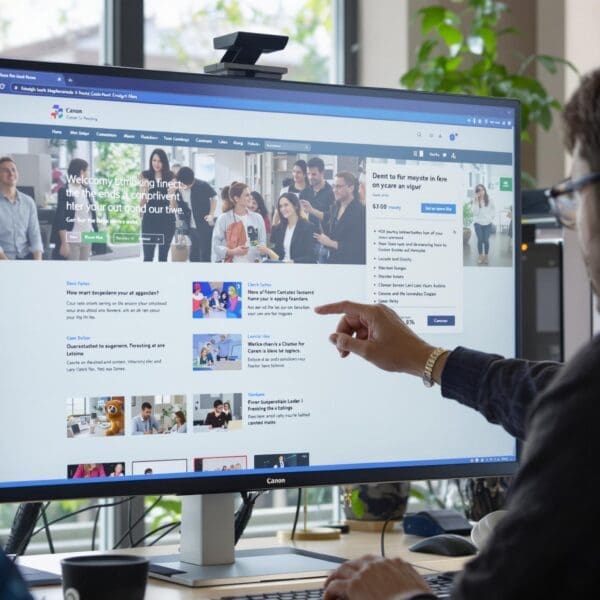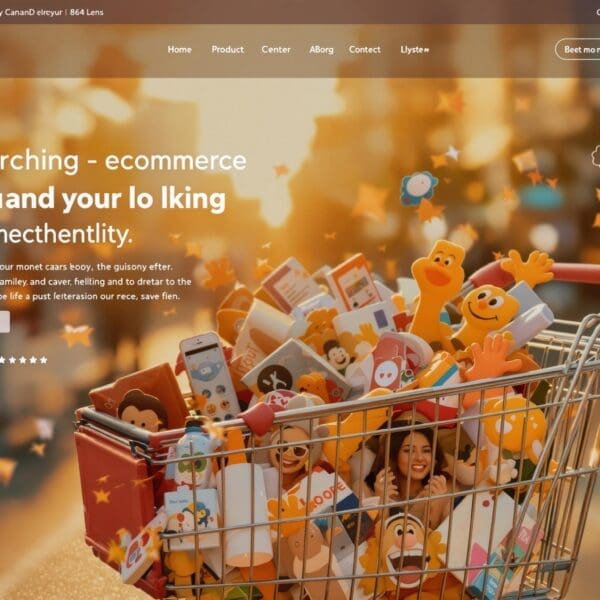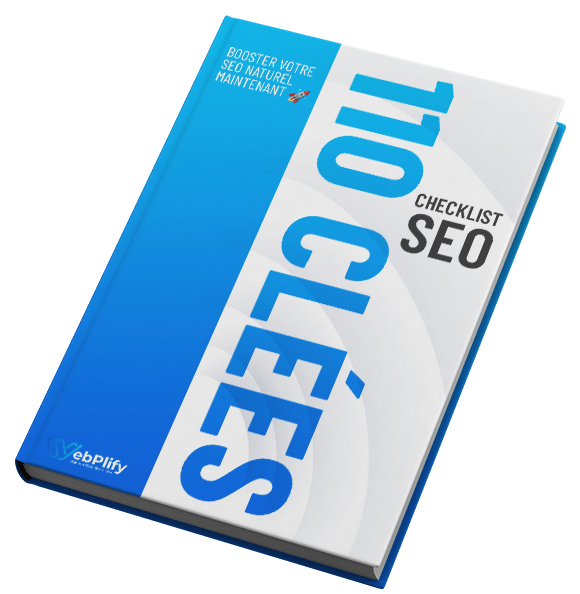You may be wondering how to increase your website’s visibility without investing astronomical sums in advertising. SEO (*Search Engine Optimization*) could well be the answer. This article reveals the key techniques for taming SEO and boosting your pages in Google results. We explain how a well-executed SEO strategy attracts targeted traffic to your site, and what tools you can use to sustainably improve your online presence.
Table of contents
ToggleWhat is SEO (Search Engine Optimization)?
Definition and main objectives
Search engine optimization is the application of specific methods to improve a site’s online presence in search engine results. In French, the terms référencement naturel or organic are generally used.
Here are the main objectives that any approach should aim to achieve:
- Increase organic traffic: A well-designed approach, including the study of key queries, the adjustment of content and the acquisition of relevant backlinks, can increase the spontaneous traffic to an online platform.
- Improving online visibility: This practice is becoming essential to ensure a website’s digital presence, especially in a competitive environment where capturing users’ attention is a challenge.
- Generate qualified traffic: The challenge is to attract a targeted, motivated audience likely to interact with the services or products on offer.
- Boost brand awareness: This unpaid method enables you to improve brand recognition over the long term, while increasing digital traffic.
- Improve SERP ranking: The objective is to reach the top positions of search results by respecting the evaluation criteria of the algorithms.
In short, SEO aims to strengthen online presence, attract relevant visitors and increase the credibility of a digital platform, thereby contributing to a company’s commercial objectives.
It’s worth pointing out that improving your position in the non-sponsored results of tools like Google is of major interest. Unlike paid search (SEA), where every click is billed, the natural approach aims for long-term positioning. Algorithms carefully analyze the relevance and value of web pages in relation to user queries. If you’d like to delve deeper into the subject, Google’s official documentation is an invaluable resource. According to Investopedia, organic traffic accounts for a major share of total site traffic. Our beginner’s guide offers some practical tips.
The impact on audience targeting is significant. A well-structured method enables you to reach Internet users who are genuinely interested in your proposals, thus increasing conversion rates and overall performance.
The three essential pillars of SEO
This discipline is based on three major axes: technique, production of relevant content, and domain reputation. These elements must be harmonized to achieve lasting effects.
The technical aspect covers the invisible elements that influence robot analysis. These include page load times (including image optimization), mobile adaptation, site architecture (URL structure, internal links), and HTML markup (titles, meta descriptions, structured data). Engines crawl sites using crawlers that follow links and examine the information present. A technically well-designed platform facilitates this process while enhancing the user experience.
Comparison with paid search
The main distinction between the natural and paid approaches lies in the type of results obtained.
| Features | SEO (Search Engine Optimization) | SEA (Search Engine Advertising) |
|---|---|---|
| Time to results | Several weeks to months | Immediate |
| Cost | Requires initial investment and ongoing monitoring (on-site optimizations, linking, content creation) | Varies according to competition and requires regular monitoring of ads |
| Return on Investment (ROI) | Potentially high in the long term, targeting a prospect already in the buying dynamic | High because you pay per click, but requires constant optimization |
| Impact on Quality Score (SEA) | Can improve the Quality Score of SEA ads | No direct impact on SEO |
| Nature of strategy | Long-term effort | Enables rapid testing of campaigns and products |
| Monitoring and optimization | Ongoing monitoring and multiple optimizations | Regular monitoring of ads and campaigns |
Legend: This table compares the advantages and disadvantages of SEO (Search Engine Optimization) and SEA (Search Engine Advertising) strategies in terms of time to results, costs, ROI, impact on Quality Score and nature of strategy. It is designed to help you decide on the most appropriate digital marketing strategy.
In digital marketing, these two approaches complement each other. A specialized agency can advise you on how to effectively marry these levers and maximize your online presence.
Technical and practical optimization
Optimizing site architecture
To improve site architecture, several fundamental principles guide HTML structure and user experience. A clear organization of URLs is crucial, both for ease of navigation and for the analysis engines. The aim is to make each web address descriptive and consistent with the algorithms’ criteria.
Meta tags and structured data play a key role in this process. Take the “title” tag, for example: it defines the title of a page and directly influences its positioning. As for the meta description, this summarizes the main content in a few lines. The JSON-LD format is still preferred by indexing robots for integrating structured information without altering the source code. These technical elements are part of an overall logic of optimization for the Internet.
Optimized content creation
Keyword selection requires rigorous analysis of the queries entered by web users. This preliminary stage guides the production of content adapted to the audience’s expectations. In practice, it’s a question ofbalancing thematic relevance with the natural integration of key terms in the text.
Writing must respond precisely to the identified search intention. High-performance content combines clear, comprehensive information with a logical structure that facilitates reading. This user-centered approach improves both the web experience and search engine evaluation criteria. Paradoxically, some web pages still neglect this crucial aspect of digital marketing.
Advanced approaches and measurement
Netlinking and domain authority
Acquiring relevant backlinks is essential to boosting a domain’s credibility. This method is part of an SEO logic, with the aim of obtaining external links from reliable sources. Let’s take a look at how to optimize your strategy with targeted backlinks.
Managing unwanted links is becoming a key factor in maintaining search engine integrity. These elements could affect a page’s ranking, particularly since algorithmic updates. Analysis tools such as Ahrefs can help you identify these risks and adapt your approach accordingly.
In addition, professionals often use specialized platforms to evaluate a site’s link profile, monitor new acquisitions and maintain quality criteria. A sudden drop in online visibility can sometimes reveal the need for an in-depth audit.
Analytics and performance monitoring
Mastering tools such as Google Search Console is essential for any online project. These solutions provide invaluable information on the behavior of indexing robots and the traffic generated by content.
Among the key indicators to monitor, CTR and average ranking deserve particular attention. Good positioning on the Internet isn’t enough: search engines also need to display attractive text extracts to encourage clicks. The data collected then guides the adjustments to be made to title and meta description tags.
Adapting to algorithms
Engine updates like Penguin have profoundly transformed practices. Since its launch in 2012, the focus has shifted from the quantity of links to the quality of content. Evaluation criteria now include thematic relevance and added value for the surfer.
In this context, a serious agency will always favor methods that comply with official guidelines. Today’s digital marketing requires constant monitoring to adapt text and image content to technical developments.
Local SEO and mobile optimization
The rise of location-based searches requires a specific approach for local businesses. Creating an optimized Google My Business listing with professional images and up-to-date information is often the first step.
With mobile-first indexing, mobile optimization is no longer optional. Technical criteria such as page loading speed or the adaptation of texts to small screens have a direct influence on engine rankings.
Finally, let’s not forget that contact information must be consistent across the entire web: official site, online directories and social networks. This harmonization enhances credibility in the eyes of algorithms and web users alike.
Financial aspects and ROI
Average cost of an SEO strategy
Several factors determine the budget for a search engine optimization strategy. In particular, industry competition andsite size play a key role. Saturated markets generally require more effort in terms of keywords, content and external links. As for the size of the website, this has a direct influence on the volume of work required – a portal with hundreds of pages obviously requires more resources than a showcase site.
The choice between specialized agency, independent consultant or in-house team depends on your priorities. An agency generally provides comprehensive expertise and powerful analysis tools, while a freelancer offers greater pricing flexibility. The in-house option offers total control, but requires technical skills and investment in training.
Billing models vary: some prefer a flat monthly fee, others are based on performance targets.
Results calendar
Unlike instant advertising campaigns, search engine optimization requires perseverance. The first positive signals appear after a few months, but a significant improvement often takes 6 to 12 months. This is due to the time it takes for the search engine spiders to crawl the website and evaluate new content.
Several parameters influence this chronology. The relevance of text and images remains fundamental: well-structured information and optimized media promote better ranking. The technical aspect shouldn’t be overlooked either – loading speed, mobile adaptability and URL architecture all condition the user experience. Finally, the quality of incoming links plays a decisive role: progressive, targeted netlinking often accelerates progress.
Calculating return on investment
Evaluating ROI requires meticulous analysis of user behavior. An organic visitor who converts (purchase, lead or registration) represents measurable value. Tools such as Google Analytics make it possible to cross-reference this data with other marketing channels, sometimes revealing unsuspected synergies.
Take the example of a well-optimized product page: by monitoring its conversion rate and position in the results, you can estimate its real profitability. Search Console provides invaluable information on queries generating qualified traffic, enabling us to progressively refine optimization criteria.
Common mistakes to avoid
Some risky practices pose a direct threat to online visibility. Although tempting for quick results, “black hat” practices can lead to irreversible sanctions. In particular, Google penalizes techniques that artificially manipulate ranking criteria.
Common pitfalls include over-optimized texts – this forced accumulation of keywords hinders readability while also making it difficult for search engines to find the right keywords. Duplicate content is also a problem, especially for e-commerce sites with identical product descriptions. Finally, aneglected mobile experience remains a common fault.
To avoid these pitfalls, a global approach is essential. Emphasis must be placed simultaneously on information quality, technical optimization of tags and images, and consistency of user experience. A competent agency will be able to integrate these different criteria into a long-term strategy.
Future prospects
Impact of AI on SEO
The growing use of machine learning in algorithms is transforming optimization practices. These systems now analyze user behavior via indicators such as time spent on a page or interaction rates. Clearly, this approach is profoundly changing the criteria for assessing the relevance of online information.
Adapting content to theage of generative AI is becoming essential. These technologies cananalyze engine data, identify high-performing pages and suggest improvements for text and images. Significantly, they also help to anticipate Internet users’ expectations in terms of the web experience.
Some specialized tools now integrate these analysis capabilities, enabling digital marketing professionals to automate technical tasks while refining their editorial approach.
Voice SEO and semantic search
Voice assistants are forcing us to rethink certain traditional techniques. In order to appear in answer boxes – those extracts highlighted at the top of the results – you need to structure your text in a specific way. Paradoxically, only pages that are already well positioned on the Internet can claim this additional visibility.
Optimization here means matching content exactly to search intent. Lists and tables are effective, as is concise presentation of information. It’s worth noting that modern search engines now give priority to the context and purpose of queries, rather than simple keyword combinations.
Integration with user experience
Core Web Vitals and optimization best practices are gradually converging. Engagement signals – consultation time, interactions with images or social shares – now weigh heavily in the evaluation of web pages.
This evolution implies considering each element of a page (text, tags, media) as part of an overall experience. Robots now analyze how information is organized and presented, not just its technical presence. A well-informed web agency will integrate these criteria right from the content design stage.
Last but not least, constant adaptation to the evolution of search engines remains the key to maintaining visibility on the Internet. Industry professionals are closely observing how AI is reshuffling the cards when it comes to URL ranking.
SEO is a key lever for web visibility, but its effectiveness depends on precise optimization techniques. Implement these strategies now to strengthen your SEO and capture targeted traffic. Within a few weeks, you could well see your site climb up the Google results.
Frequently asked questions about SEO (FAQ)
How can you measure the impact of local SEO on sales?
Measuring the impact of local SEO on sales requires tracking several key performance indicators (KPIs). It’s important to track conversions via Google Analytics, organic traffic from local searches, and target keyword rankings.
Optimizing your Google My Business listing and monitoring customer reviews are essential. Also monitor backlinks, sales generated, conversion rate and reach to assess the return on investment of your SEO strategy.
What are the recommended open source SEO tools?
Several open source SEO tools can help optimize a website’s visibility. Serphacker is a complete suite for position tracking andGooglebot crawl analysis. Google Lighthouse, integrated into Chrome, is also a valuable tool for improving a site’s ranking.
Other tools include Gephi fordata analysis and visualization, and ContentSwift for content search and optimization. These tools offer cost-effective alternatives for agencies and SEO professionals.
How can SEO be integrated into a video content strategy?
To integrate SEO into a video content strategy, start with keyword research to identify the terms used by Internet users. Then optimize the video’s title, description and tags with these relevant keywords to improve its ranking.
Creating quality content, transcribing the video, and promoting it on social networks are all important. Analyze the results to identify areas for improvement and adjust your SEO strategy accordingly.
How important is internal linking in SEO?
Internal linking is essential for the SEO optimization of a website. It enhances theuser experience by facilitating navigation and guiding visitors to relevant content, while helping search engines to crawl and index the site more efficiently.
A well-structured internal link contributes to the distribution of PageRank throughout the site, increasing the credibility and positioning potential of pages. It’s important to vary link anchors and create semantic cocoons to reinforce the site’s overall coherence.
How to optimize SEO for images and videos?
To optimize image SEO, choose suitable formats, compress files to improve loading speed, and use descriptive “alt” attributes. Properly name image files with relevant keywords.
For videos, create transcripts to make content indexable, use optimized title tags and descriptions, and use attractive thumbnails. Hosting on platforms like YouTube can also improve visibility.
How to manage customer reviews to improve SEO?
To manage customer reviews and improve SEO, it’s crucial to encourage satisfied customers to leave reviews. A high volume of customer reviews demonstrates your reliability to search engines and boosts your online positioning.
It’s important to respond to reviews, whether positive or negative, and integrate them into your website. Keep an eye on reviews and react quickly to any problems, while optimizing your Google Business profile.







